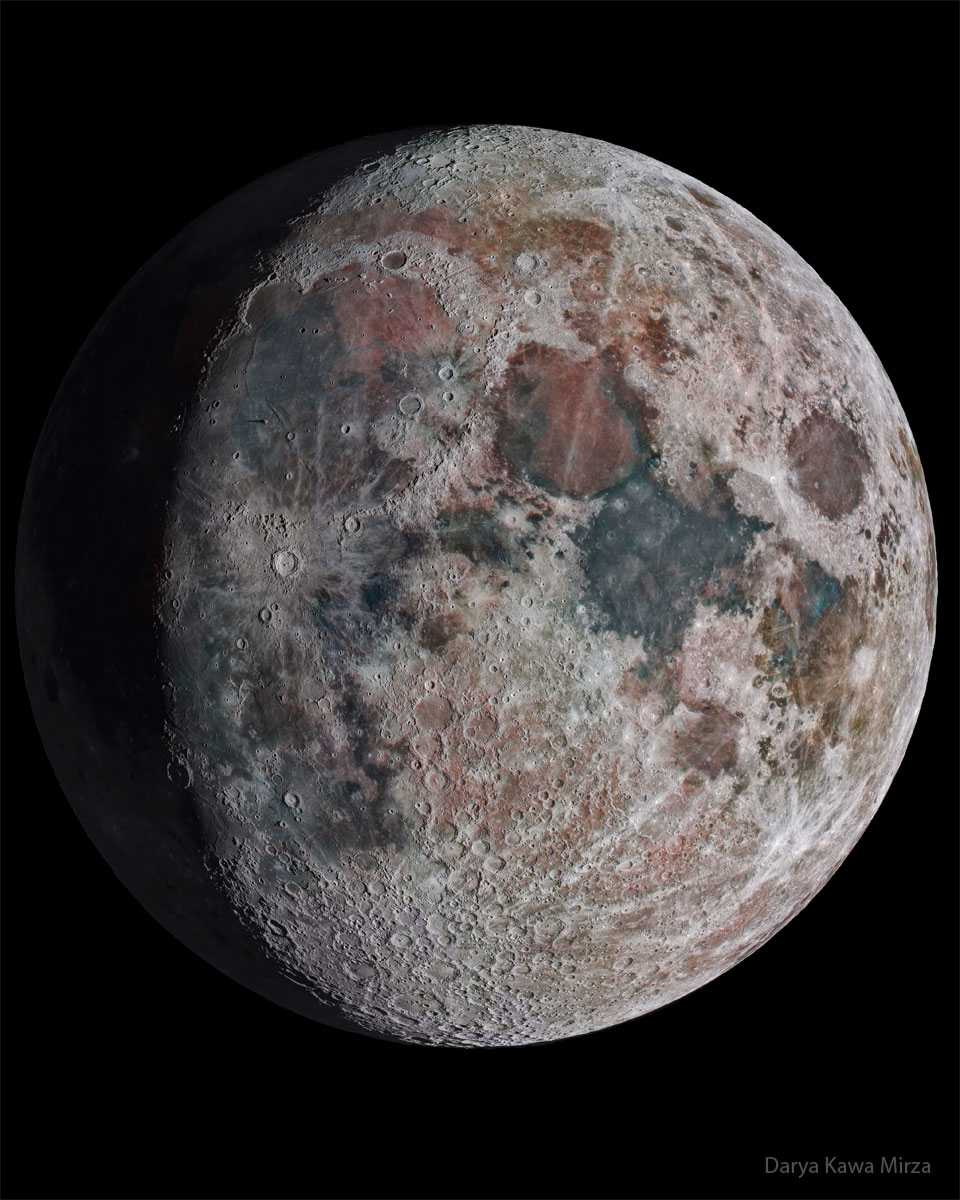2023年1月16日
Moon Enhanced
Image Credit & Copyright: Darya Kawa Mirza
Explanation: Our Moon doesn’t really look like this. Earth’s Moon, Luna, doesn’t naturally show this rich texture, and its colors are more subtle. But this digital creation is based on reality. The featured image is a composite of multiple images and enhanced to bring up real surface features. The enhancements, for example, show more clearly craters that illustrate the tremendous bombardment our Moon has been through during its 4.6-billion-year history. The dark areas, called maria, have fewer craters and were once seas of molten lava. Additionally, the image colors, although based on the moon’s real composition, are changed and exaggerated. Here, a blue hue indicates a region that is iron rich, while orange indicates a slight excess of aluminum. Although the Moon has shown the same side to the Earth for billions of years, modern technology is allowing humanity to learn much more about it — and how it affects the Earth.
Tomorrow’s picture: Andromeda, unexpected
色彩经过强化的月亮
图像提供与版权: Darya Kawa Mirza
说明: 月亮看起来其实并不是这种模样。在自然情况下,地球的卫星月亮并没有这么丰富的纹理,而且颜色差异也不易察觉。不过,这张数码影像创作是有事实的根据。这幅主题图像是由多张图组合而成,并且经过强化以突显真实的表面特征。举例来说,这些强化更清楚的呈现撞击坑,而这些撞击坑见证了我们的月球,在它46亿年的历史中所受到的重轰击。而名为月海的暗区,曾是熔融的岩浆海,撞击坑的数量也较少。此外,这幅图像的色彩虽然基于真实的组成,但颜色经过置换及夸大。在此图里,蓝色系显示该些区域富含铁,而橙色代表铝含量多于均值。尽管数十亿年来月亮一直以同一面向着地球,但现代技术能让人类更深入了解它及它如何影响地球。
明日的图片: Andromeda, unexpected



